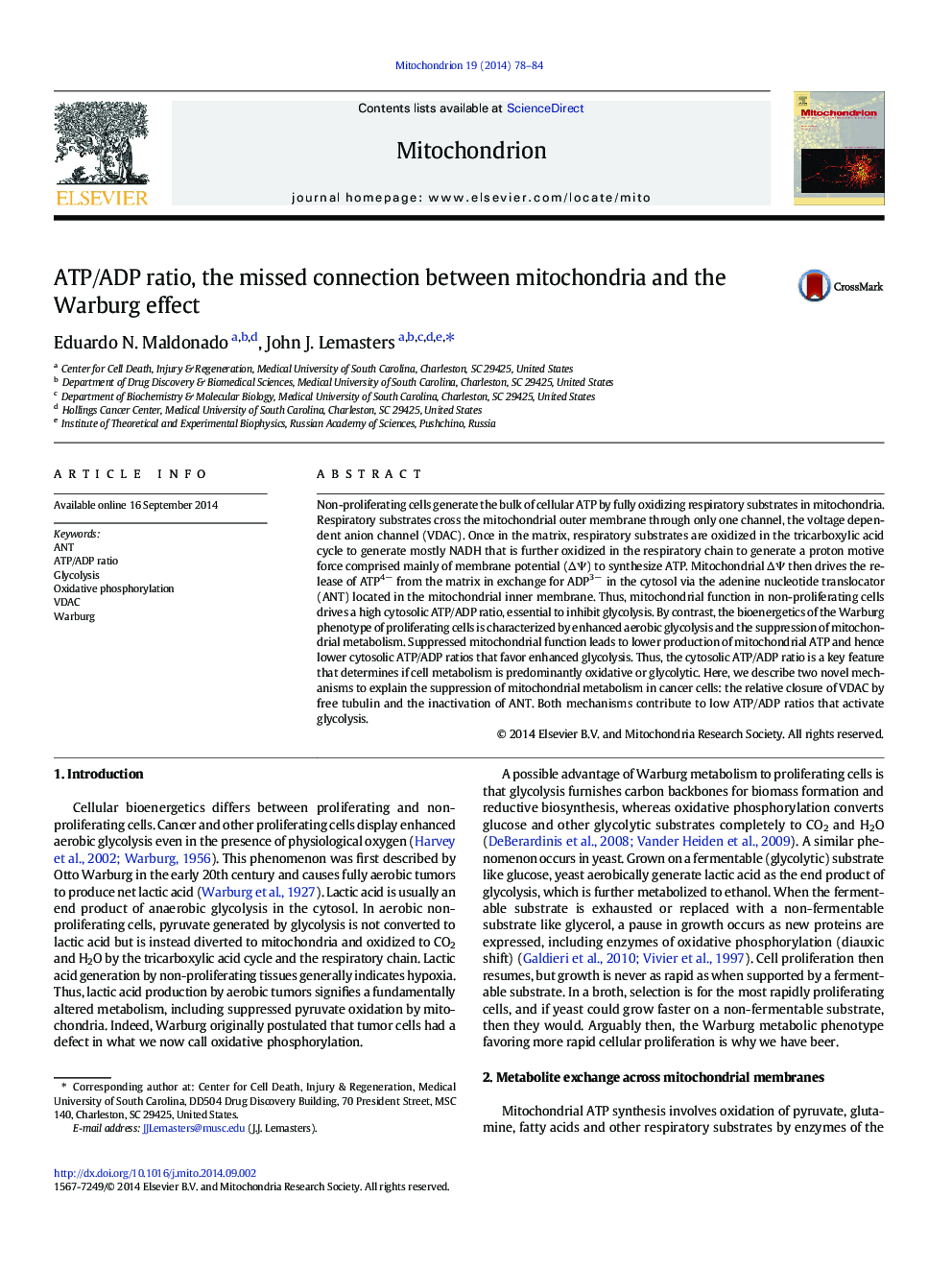| کد مقاله | کد نشریه | سال انتشار | مقاله انگلیسی | نسخه تمام متن |
|---|---|---|---|---|
| 2068697 | 1078338 | 2014 | 7 صفحه PDF | دانلود رایگان |

• VDAC mediates flux of metabolites across the mitochondrial outer membrane.
• Electrogenic ANT exchanges matrix ATP for cytosolic ADP across the inner membrane.
• High cytosolic ATP/ADP generated by oxidative phosphorylation inhibits glycolysis.
• VDAC closure and ANT inactivation lead to low ATP/ADP in proliferating cells.
• In cancer cells, low ATP/ADP favors the aerobic glycolytic Warburg phenotype.
Non-proliferating cells generate the bulk of cellular ATP by fully oxidizing respiratory substrates in mitochondria. Respiratory substrates cross the mitochondrial outer membrane through only one channel, the voltage dependent anion channel (VDAC). Once in the matrix, respiratory substrates are oxidized in the tricarboxylic acid cycle to generate mostly NADH that is further oxidized in the respiratory chain to generate a proton motive force comprised mainly of membrane potential (ΔΨ) to synthesize ATP. Mitochondrial ΔΨ then drives the release of ATP4− from the matrix in exchange for ADP3− in the cytosol via the adenine nucleotide translocator (ANT) located in the mitochondrial inner membrane. Thus, mitochondrial function in non-proliferating cells drives a high cytosolic ATP/ADP ratio, essential to inhibit glycolysis. By contrast, the bioenergetics of the Warburg phenotype of proliferating cells is characterized by enhanced aerobic glycolysis and the suppression of mitochondrial metabolism. Suppressed mitochondrial function leads to lower production of mitochondrial ATP and hence lower cytosolic ATP/ADP ratios that favor enhanced glycolysis. Thus, the cytosolic ATP/ADP ratio is a key feature that determines if cell metabolism is predominantly oxidative or glycolytic. Here, we describe two novel mechanisms to explain the suppression of mitochondrial metabolism in cancer cells: the relative closure of VDAC by free tubulin and the inactivation of ANT. Both mechanisms contribute to low ATP/ADP ratios that activate glycolysis.
Journal: Mitochondrion - Volume 19, Part A, November 2014, Pages 78–84